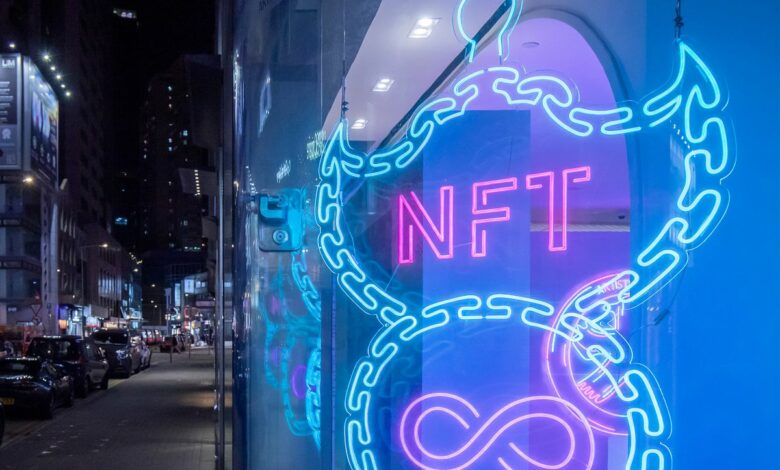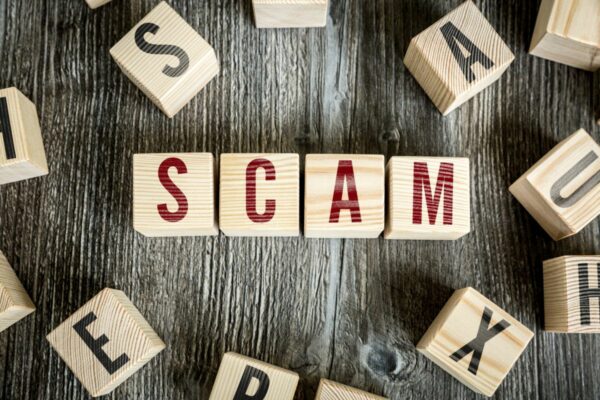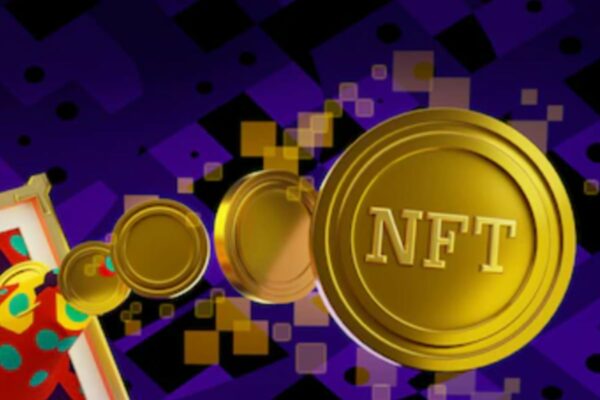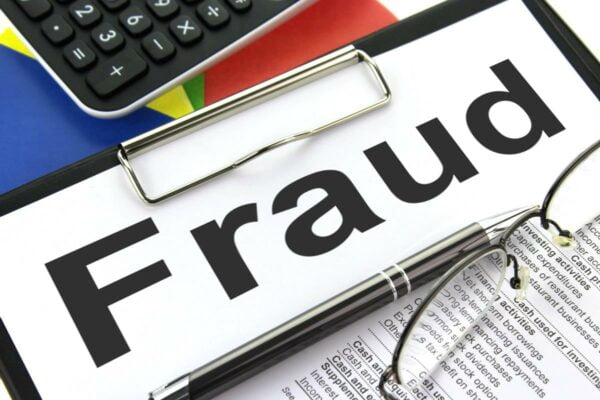Beware of NFT Scams: Causing Threat

Beware of NFT Scams: Causing Threat
Scams involving NFTs are a problem for individuals worldwide. Although it might be economical, the NFT assiduity isn’t free from fraud.
What if you could earn tens of thousands of dollars by selling a JPEG image, a meme, or a GIF? Hello and welcome to the world of non-fungible tokens or NFTs. NFTs are digital assets that, to the uninitiated, can be anything from a piece of digital artwork, a JPG image, memes, or GIFs to music, films, and collectables from video games.
They are exchanged using cryptocurrencies. NFTs sound fantastic as a result on two levels: It provides an outlet for the creators, such as artists, to market their creations. For buyers, collecting such assets that they are passionate about as well as selling them for more money is an option.
Isn’t that tidy? Yes, NFTs can be a profitable instrument for buyers, sellers, and NFT marketplaces. But doesn’t anything that’s profitable draw a fair number of con artists and fraudsters? With NFTs, the situation is the same.
Recently, several NFT marketplaces had come under criticism when users had their cryptocurrency and NFT collections stolen. A lawsuit over this issue was filed against the leading NFT marketplace OpenSea earlier this year.
Let’s find out what NFT is
A blockchain-based nonfungible token (NFT) is a special kind of digital asset. These digital assets offer ownership authentication and are not transferable like other forms of cryptocurrency. To track ownership, every blockchain transaction is recorded in a digital ledger.
No two NFTs are alike and cannot be replicated or recreated. NFT types include the following, as examples:
Picture file-trading card cartoon virtual real estate NFTs are purchased as collectors and unusual investments. NFTs can fetch millions of dollars when sold. For instance, digital artist Beeple made over $69 million from the sale of one NFT piece.
Bored Ape Yacht Club and CryptoPunks are two other NFT collections that are selling for hundreds of thousands of dollars each. Yes, investing in NFTs can be risky, but it can also be rewarding, and a little knowledge can keep you from falling victim to fraud.
Typical NFT frauds
Although there are many other types of NFT frauds, the following are examples you should avoid:

NFTs that are counterfeit are, as the name implies, copies or false representations of the genuine article. Simply said, after an artist makes a piece of art, a fraudster replicates it and offers it for sale on an NFT marketplace. Because it is difficult to distinguish between a copy and an original, the buyer ends up paying more than necessary.
Phishing
In the digital sphere, phishing is nothing new.
Typically, this type of scam entails bogus emails, pop-up windows, or messages on Telegram or WhatsApp that direct you to a fake website. You are subsequently asked for the private wallet key. Your NFT items and cryptocurrency collection can be readily siphoned off as soon as the con artist gains access to it.
A crypto specialist named Hitesh Malviya claims that phishing is one of the most prevalent NFT scams. When asked if there is a means to tell an original piece from a copy, he responds, “Right now, it is quite impossible to do so. However, regulations may be implemented soon, and things may become better regulated, making it easier for us to distinguish between the two.
Wash trade is a dishonest practice in which the seller inflates the asset’s value unnecessarily. Imagine you are an NFT seller with a $100 digital asset to comprehend it.
However, you are also the buyer and purchase the same item for $200, giving the impression to a genuine buyer that the NFT is worth $200. As a result, the buyer places a higher bid, resulting in a significant profit for the seller while the buyer is left holding a possession that is significantly less valuable than what she paid.
Rug pull
Social media can play a huge function withinside the NFT world, along with helping scamsters. In what’s known as rug pull, the creators of a task generate sufficient buzz to pressure up the expenses of virtual belongings earlier than pulling their guide altogether, making the fee of the asset crash to the ground. While the creators stroll away with masses of virtual money, the traders become with nothing.
Social media impersonation
Cybercriminals create online social media profiles to persuade humans to shop for faux NFTs. They use social media to make the appearance of their faux websites legitimate.
Bidding scams
A bidding rip-off occurs while a person attempts to resell their NFT. After getting the best bid, the scammer — the best bidder — switches out the cryptocurrency to certainly considered one among a lesser value. It might also additionally seem like the best quantity. However, a few cryptocurrencies are well worth much less than others.
Investor scams
When promoting or shopping for NFTs, humans stay anonymous, which makes it simpler to create funding scams. With a funding rip-off, risk actors create a profitable mission to make investments in. After amassing money, they disappear without a trace.
The latest investor rip-off with the Evil Ape developer stole nearly $three million in investments. Evil Ape seemed like a part of the valid Evolved Apes mission however vanished after amassing
Pumps and Dumps
Pumps and dumps scams occur when a group buys a large number of cryptocurrencies or other currencies to boost the price of demand. After the price goes up, or after it goes up, the group sells or dumps the assets, takes advantage of the profits, and everyone else loses.

Fake NFT scammers can steal or copy artwork and post this fake content to legitimate websites such as OpenSea. NFTs have no value because they have been stolen, copied, or forged. The person has already purchased it before realizing that it is a fake.
How to avoid NFT scams?
The majority of NFT scams aim to steal bitcoin wallet data or con users into purchasing phoney NFTs. Check out the ways for avoiding NFT scams below:
Keep the key secret. Do not share cryptocurrency wallet information with anyone. These keys must be private with the recovery code. You don’t need to know these passwords for any reason. Find an NFT seller. Before making a purchase, view the seller’s NFT Marketplace account and look for the blue checkmark.
You can also browse the seller’s social media account to see other lists of this seller and look for online reviews. NFT Check the transaction history. Beware of daily NFTs. Do not click on suspicious attachments or links.
Even if the link appears to take you to a real website, it can be fake. We recommend that you always visit the page directly and not click the link. Check the price of NFT.
Before buying an NFT, please visit trading platforms such as Axie Marketplace, Mintable, and OpenSea to see if the prices are similar. If the price looks much lower or higher than these legitimate trading sites, it could be a scam.
Keep the commandments. Be sure to check your currency before accepting a bid. Do not accept anything lower than expected. Create a strong password. Create a strong password for your NFT account and crypto wallet. Two-factor authentication is another way to keep your NFT secure.
Facial recognition and fingerprints make it difficult for someone to steal your identity. Use the reputable NFT Forex market. Don’t think the markets that sound too good are true. New marketplaces are ubiquitous, offering minimal security. Stick to reputable exchanges such as OpenSea, Raible, Mintable, Foundation, MakersPlace, and Axie Marketplace.
How to protect yourself from fraud?
Yes, playing NFTs can be risky. But you can avoid fraud if you exercise caution and research. Avoid clicking the links unless you receive genuine confirmation, advises Malviya. “Always make sure. If you examine closely, you may determine whether it’s a scam to some level “He adds.
Always buy from legitimate markets and avoid falling into giveaways from suspicious vendors, Malviya advises. OpenSea, Nifty Gateway, Raible, and Foundation are markets to consider. Do the same when you enter the NFT, and buy from a confirmed seller. Most sellers have a blue checkmark next to their username.

Keep your private wallet key to yourself. “Keep the key somewhere or keep it in mind. Malviya remarked that if you lose it, you also lose your possessions. Create a secure password for both your NFT account and cryptocurrency wallet, he continues. Furthermore, anyone can utilise a burner wallet as another method.
This limits the number of funds that can be allocated to a wallet and minimizes risk.
Do not download other apps disguised as NFT Marketplace. Yes, NFT normalization hasn’t been done much so far, which can make it difficult to control fraud.
He continues, “The NFT market can take initiatives to educate users, some of which do. That said, the only thing to remember is that if something is too good to be true, it’s better to double-check.
Edited by Prakriti Arora






